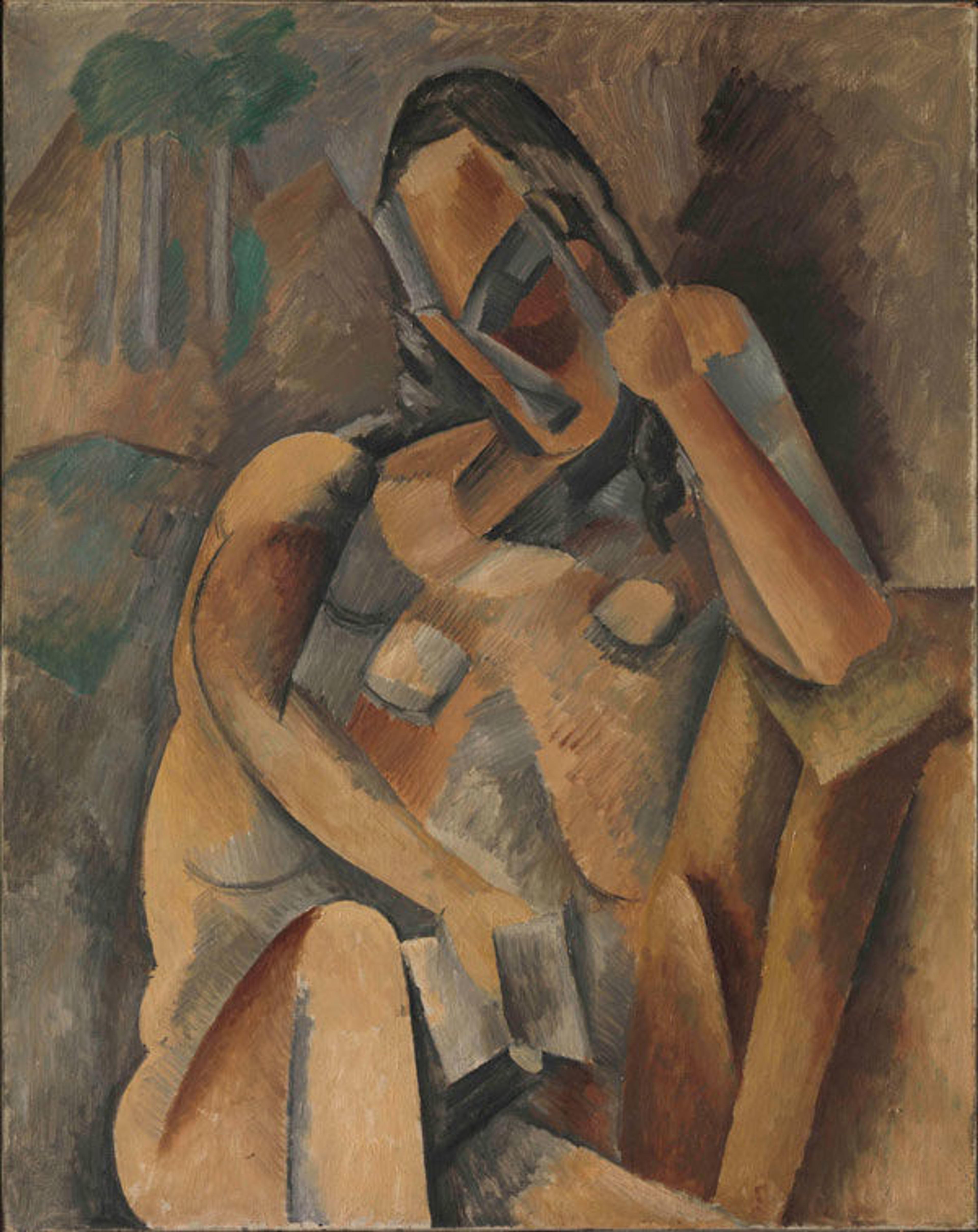Pablo Picasso (Spanish 1881–1973). Woman with a Book, 1909. Oil on canvas; 36 1/4 x 28 3/4 in. (92.1 x 73 cm). The Metropolitan Museum of Art, New York, Promised Gift from the Leonard A. Lauder Cubist Collection © 2015 Estate of Pablo Picasso / Artists Rights Society (ARS), New York
«Every age, and every culture, has its rebels. Often, these rebels are inspired by a societal trauma. The Great War, later known as World War I, polluted the world by fostering a "lost generation." In reflection of this evolution, Sigmund Freud advanced his science of psychoanalysis, challenging the logic of man. Albert Einstein augmented his theory of relativity, questioning the prudence of physics. In art, the rebellion manifested as Cubism.»
In an act that was described by the New York Times as "one of the most significant gifts in the history of the Metropolitan Museum of Art," Leonard A. Lauder gifted his astonishing Cubism collection to the Museum. With eighty-one works of art, the current exhibition Cubism: The Leonard A. Lauder Collection is extensive. While the art itself is undeniably incredible, the curator's presentation is comprehensive and inspiring.
Georges Braque, Pablo Picasso, Juan Gris, and Fernand Léger governed the Cubist movement. Each artist geometrically divided his canvas and delineated various points of view of the subject within the divisions. This characteristic element of Cubism gives a complete rendering of the painter's subject.
In other movements, the employment of cool and warm colors is subtle, but in Cubism, it is overt. The geometric divisions virtually diffract color as prisms disperse light. In this fashion, deconstructed color becomes a major aesthetic instrument and an effective means of embellishing rather mundane subjects. Picasso especially demonstrates his expert command of cool blue shadows in his paintings of women. This type of ornamentation contributes to the paintings' emotional essence and enraptures viewers.
Musical instruments are another major feature of Cubism, functioning as recurring images. The inherent brown color of the instruments—violins, mandolins, and guitars—provides an avenue for additional, unique color decisions, often neutrals and cool blues. Additionally, the presence of musical instruments supports a particular aesthetic harmony and luxury.
Despite the challenge of the postwar period, the artists, as rebels, defined new art, setting the tone for artistic greatness in the twentieth century. Lauder has bestowed a gift on the public, a gift that I think has the power to transmit inspiration to all teens. I definitely recommend a visit to the Cubism exhibition before it closes on February 16!
